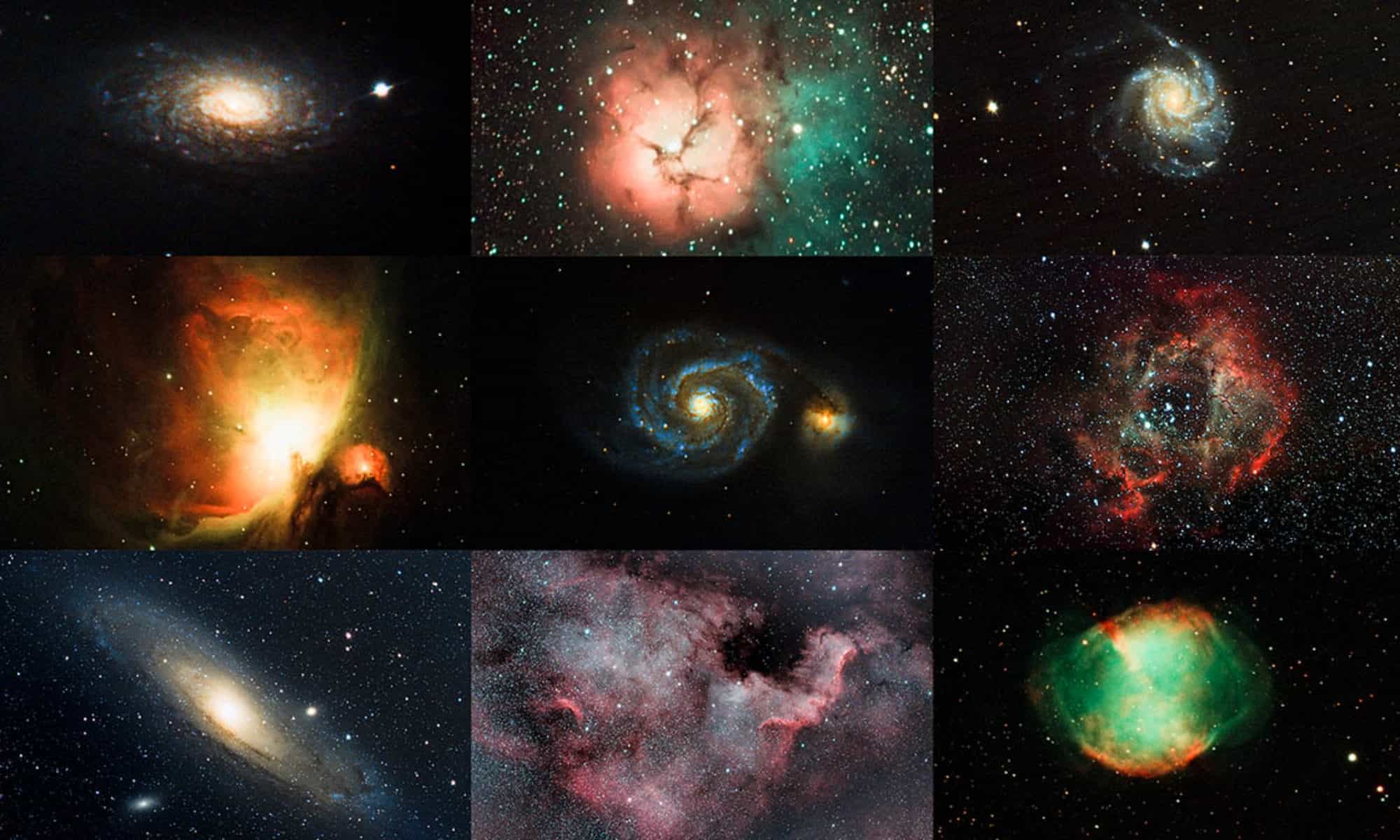
This image of the Andromeda Galaxy and two satellite galaxies, M 32 and M 110, was taken in my backyard observatory on July 5, 2019.
1. The Andromeda Galaxy is named after a heroine in Greek mythology. In the Greek myth, Perseus first spied Andromeda on his way back home from killing Medusa. The sea-god Poseidon had chained the beautiful maiden to rocks overlooking the sea. Her mother had foolishly boasted that Andromeda was more beautiful than even the Nereids. This boast so enraged Poseidon that he chained Andromeda there to be devoured by a sea monster. Perseus slew the sea monster, rescued Andromeda and married her. According to the myth, they had nine children – seven sons and two daughters. After Andromeda’s death, the goddess Athena honored her by putting her in the sky as a constellation. She resides forever near her mother Cassiopeia, and her beloved husband Perseus. The galaxy earned its name because of its location near one of the legs of the constellation.
2. Andromeda is becoming a much more popular girl’s name. Until recently, Andromeda was not a popular girl’s name. With the advent of the Harry Potter series, we’re seeing many more Andromeda’s being born. For you fans, Andromeda Tonks was Nyphadora’s mother. Andromeda met Harry in the final book of the series, The Deathly Hallows. She was the cousin of both Sirius Black and Bellatrix Lestrange. Her family disowned her for the sin of marrying a muggle, Ted Tonks.
3. Andromeda is a popular name in syfy literature. In 1969, Michael Chrichton wrote The Andromeda Strain, a novel about an extraterrestrial microorganism that contaminated a military satellite. When the satellite crashed to Earth in Piedmont, AZ, the microorganism killed almost everyone in the town. Scientists had to race to kill the microorganism, codenamed “Andromeda”, before it destroyed all life on earth. The novel was made into a blockbuster movie in 1971 and a television miniseries in 2008.
Andromeda Ascendant was the name of the ship captained by Dylan Hunt in the 2000-2005 television series. In this series, the mission of the captain and crew was to restore the Commonwealth that had been destroyed 300 years before.
4. Early astronomers thought the Andromeda Galaxy was just a nuisance. Charles Messier was one of the most famous early astronomers. He used a 4” telescope from his hotel room in downtown Paris to search the skies for comets. While conducting his search, he made a list of things he saw that weren’t comets. In 1764, Charles Messier listed the Andromeda Galaxy as object 31 in his catalog of things that were not comets. That list of nuisance objects became the first great catalog of deep-sky objects!
5. The Andromeda Galaxy is going to collide with the Milky Way. The Andromeda Galaxy is not the closest galaxy to us, but it is the closest large galaxy. It’s large and bright enough that it can be seen as a smudge in the sky on very dark nights even without a telescope. It’s moving ever closer to us on a collision course with our own Milky Way!
6. The Andromeda Galaxy might not exist anymore. The Andromeda Galaxy was born about three billion years ago when two smaller galaxies crashed and merged. The galaxy is 2.5 million light years from us, making this image a snapshot of a time two and a half million years in the past. It’s strange to think that if the Andromeda Galaxy exploded, we wouldn’t know anything about it for millions of years.
7. The Andromeda Galaxy has its own swarm of satellite galaxies. If you look closely at the image, you can see a small galaxy, designated M 110, slightly above and to the right of the central bulge of Andromeda. There’s a somewhat larger satellite galaxy, M 32, below and to the left of the bulge. These two satellite galaxies are among the more than 30 small galaxies which cluster around Andromeda.
Until the next blog, take a little time to ponder all the hidden wonders around us.
